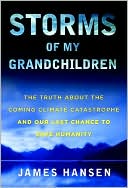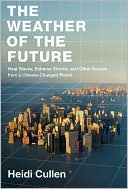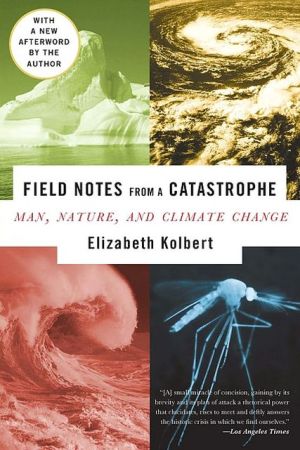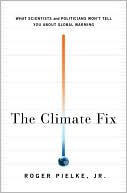Power Struggle: World Energy in the Twenty-First Century
Can catastrophic climate change in this century be averted without strangling the world economy and global aspirations for improved living standards?both of which depend on the continuing prominence of fossil fuels in the 21st century? Power Struggle: World Energy in the Twenty-First Century argues that it can. Moroney demonstrates that energy is the cornerstone of world civilization and global economic growth by measuring the tight coupling between energy per capita and real standards of...
Search in google:
Can catastrophic climate change in this century be averted without strangling the world economy and global aspirations for improved living standards-both of which depend on the continuing prominence of fossil fuels in the 21st century? Power Struggle: World Energy in the Twenty-First Century argues that it can. Moroney demonstrates that energy is the cornerstone of world civilization and global economic growth by measuring the tight coupling between energy per capita and real standards of living. Fossil fuels-oil, natural gas, and coal-today account for 88 percent of world energy. The author shows that renewable energies such as solar, wind, ethanol, and biodiesel cannot be deployed to replace fossil fuels on a globally significant scale within the next 50 years. Fossil fuels, he maintains, will continue to dominate world energy for the next half-century, in spite of the coming severe depletion of world reserves of conventional oil and gas.But since the burning of fossil fuels is the principal source of carbon dioxide emissions, which are in turn the principal source of global warming, how can catastrophic climate change be avoided? The solution to the dilemma, says Moroney, is to capture and permanently store most of the carbon dioxide emitted by the human race. Half of all human CO2 emissions originate in 8,000 electric power plants, refineries, steel mills, and other manufacturing facilities around the world. The technology is at hand to capture the CO2 emissions from these big plants and store them, permanently and harmlessly, in geological traps and the deep ocean, instead of releasing them into the atmosphere. Coal-fired power plants with near-total capture of CO2 emissions will become operational in the United States and Western Europe as early as 2012. If the world is to thread the perilous straits of economic and climate catastrophe, international cooperation and capital investment on a scale unprecedented in human history will be required. Power Struggle marshals the most important facts concerning world energy reserves: where oil, natural gas, and coal, and uranium reserves are located; how long they will last at projected rates of consumption; and why the most prosperous countries of the world will increasingly rely on oil and natural gas imports from the Middle East and Russia. Moroney shows why it is reasonable to expect that unconventional oil and gas sources such as heavy crude oil, tar sands, and oil shale will come on stream as feasible long-term substitutes for the world's depleted reserves of conventional oil and gas. Robert Eagan - Library Journal In this solid, if pedestrian, survey of world energy issues, Moroney (economics, Texas A&M Univ.) argues that oil, natural gas, and coal-fuels now representing 85 percent of all energy consumed around the globe-will continue to dominate despite predicted depletion of world reserves. Renewable energy solutions are largely discounted here, and conservation measures are not mentioned. Moroney worries about radioactive waste storage from nuclear power plants, yet he puts great faith in the development of capture-and-storage technologies of CO2 fossil-fuel emissions. The author's claim that his text is fit for "nonspecialized adult audiences" seems accurate. For larger collections.
IllustrationsForewordPrefaceAcknowledgments1 Why Energy Is Essential 1Introduction 1The Vital Role of Energy 2Energy in Everyday Life 3Energy and Real Living Standards in the G-7 4Energy and Real Living Standards in the D-6 8Commercial and Traditional Energies 9Energy and Real Living Standards in Low-Income Countries 9Nonmonetary Elements of Real Living Standards 10Economic Growth Improves the Quality of Life 14The Role of Energy in Economic Growth 15Conclusions 162 World and Regional Energy Demand 19Introduction 19World Primary Energy Demand 21Primary Energy Demand in the United States 23Primary Energy Demand in the European Union and Japan 26Primary Energy Demand in the D-6 27Income Elasticities in Developing Countries 29Projections of Energy Demand 30Oil Refining and Distribution 30Conclusions 323 Energy Reserves and Production 35Introduction 35Proved Reserves Compared with Probable Reserves 36Oil Reserves and Production 37Natural Gas Reserves and Production 40Coal Reserves and Production 42Three Stages of Conventional Oil Production (Excluding Oil Shale and Tar Sands) 46Exploration and Development of New Reserves 50Politics of Revenue Sharing 51World Energy Growth until 2030 52Projected Energy Supplies 54Electricity: Projections to 2030 (Reference Case) 60Conclusions 634 Energy Prices and Costs 67Introduction 67Markets for Fossil Fuels 68Short-Term vs. Long-Term Prices 70Real Prices of Crude Oil, Natural Gas, and Coal 72Price Projections Through 2030 76Future Costs of Uranium and Thorium 78Renewable Energies 79Conclusions 805 Imports andExports-Oil, Natural Gas, and Coal 83Introduction 83Comparative Costs 84Where Do U.S. Imports Come From? 87Global Oil Exports and Imports 88U.S. Natural Gas Imports 92Global Natural Gas Exports and Imports 92Global Coal Exports and Imports 94Conclusions 956 Energies for the Future 99Introduction 99The Roles of Natural Resources 100The Age of Substitutability: Infinite Energy? 101The Future of Conventional Oil 105Why the Middle East Is the Key to Conventional Peak Oil Production 111Unconventional Oil: Economics, Technology, and Politics 116Unconventional Gas 120Conclusions 1227 Fossil Fuels, Carbon Dioxide, and Global Warming 125Introduction 125Greenhouse Gas Emissions 126A Scientific Consensus on CO[subscript 2] and Global Warming 129Industry Viewpoints on Fossil Fuels and Global Warming 130The Kyoto Protocol 132Politics of Global Warming 134Regional Carbon Dioxide Emissions 135Carbon Dioxide Intensities of Production 136Past and Projected Climate Changes 139Some Costs of Global Warming 139Regional Warming in the United States 140CO[subscript 2] Capture and Storage 141Conclusions 1468 Conclusions 149Energy in the Twenty-First Century 149International Trade 152Global Warming 153China's Growing Military Power 155Conflicts in the Middle East 156Global Trends in Energy and Wealth 157An Uncertain Future 158Glossary 161References 167Index 175
\ From the Publisher"In this solid, if pedestrian, survey of world energy issues, Moroney (economics, Texas A&M Univ.) argues that oil, natural gas, and coal--fuels now representing 85 percent of all energy consumed around the globe--will continue to dominate despite predicted depletion of world reserves."\ -\ Library Journal\ "Moroney believes fossil fuels will continue to be the major energy sources for at least another 50 years and that carbon sequestration should be considered as an immediate approach to global warming. This would be an attainable goal because half the world's CO2 emissions are concentrated in approximately 8,000 large plants and could be captured on site. Moroney presents his case accessibly, with much statistical support,…Recommended. Lower-division undergraduate through professional collections"\ -\ Choice\ \ \








